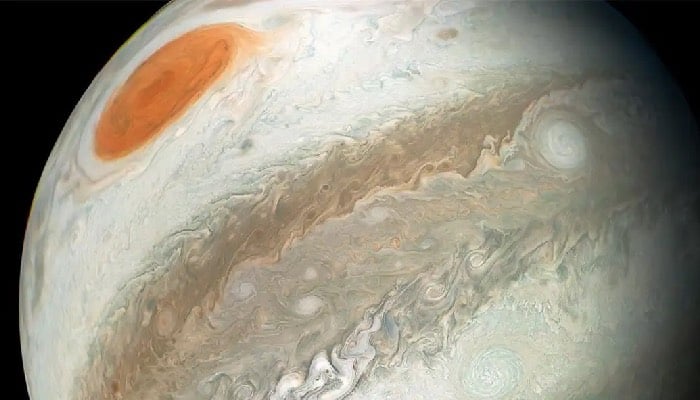
Jupiter’s Great Red Spot, a massive storm on the largest planet in the solar system, is around 190 years old, according to new research.
As per CNN, this discovery suggests that the storm, which has been a subject of debate among astronomers, formed much later than previously thought.
Historically, some experts believed Italian astronomer Giovanni Domenico Cassini observed the Great Red Spot in the 17th century.
However, recent findings indicate Cassini saw a different storm, known as the "Permanent Spot," which was observed until 1713.
A study published on June 16 in the journal Geophysical Research Letters details these findings.
Researchers analyzed historical drawings and images, using numerical models to recreate the storm’s potential longevity.
They concluded that the Great Red Spot likely appeared around 1831.
The Great Red Spot, about 10,159 miles (16,350 kilometers) wide, features winds of 280 miles per hour (450 kilometers per hour) and is visible even through small telescopes.
It has a distinctive red hue due to chemical reactions in Jupiter's atmosphere.
The research team also investigated how the storm originated, running simulations on supercomputers.
They believe the storm formed from an atmospheric instability rather than from a superstorm or merging smaller vortices.
However, the Great Red Spot has been shrinking over time.
It measured about 24,200 miles (39,000 kilometers) at its longest point in 1879 but is now about 8,700 miles (14,000 kilometers).
Despite this, it remains the largest and longest-lived vortex in our solar system.
Researchers aim to understand the processes that keep the storm stable and predict its future.















